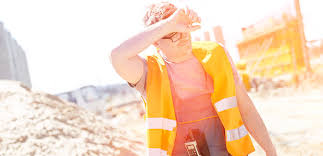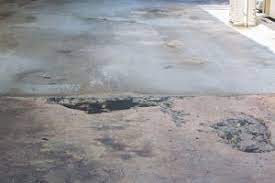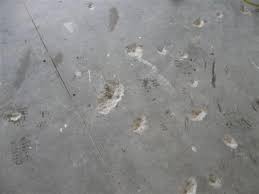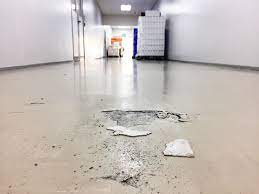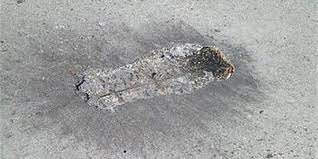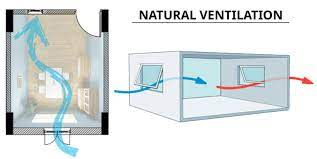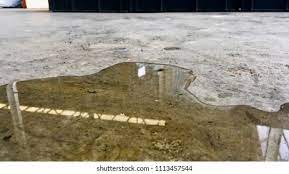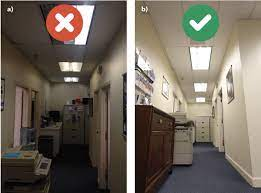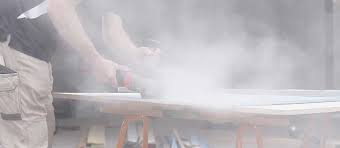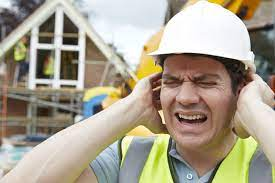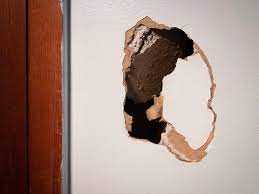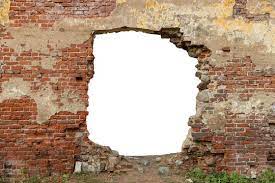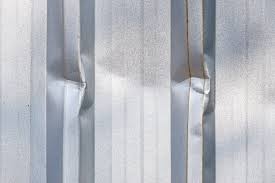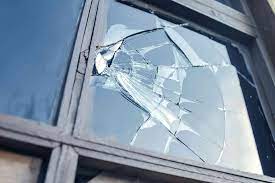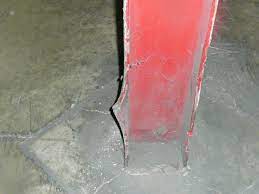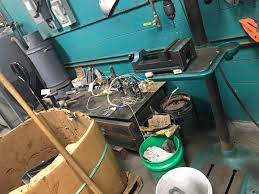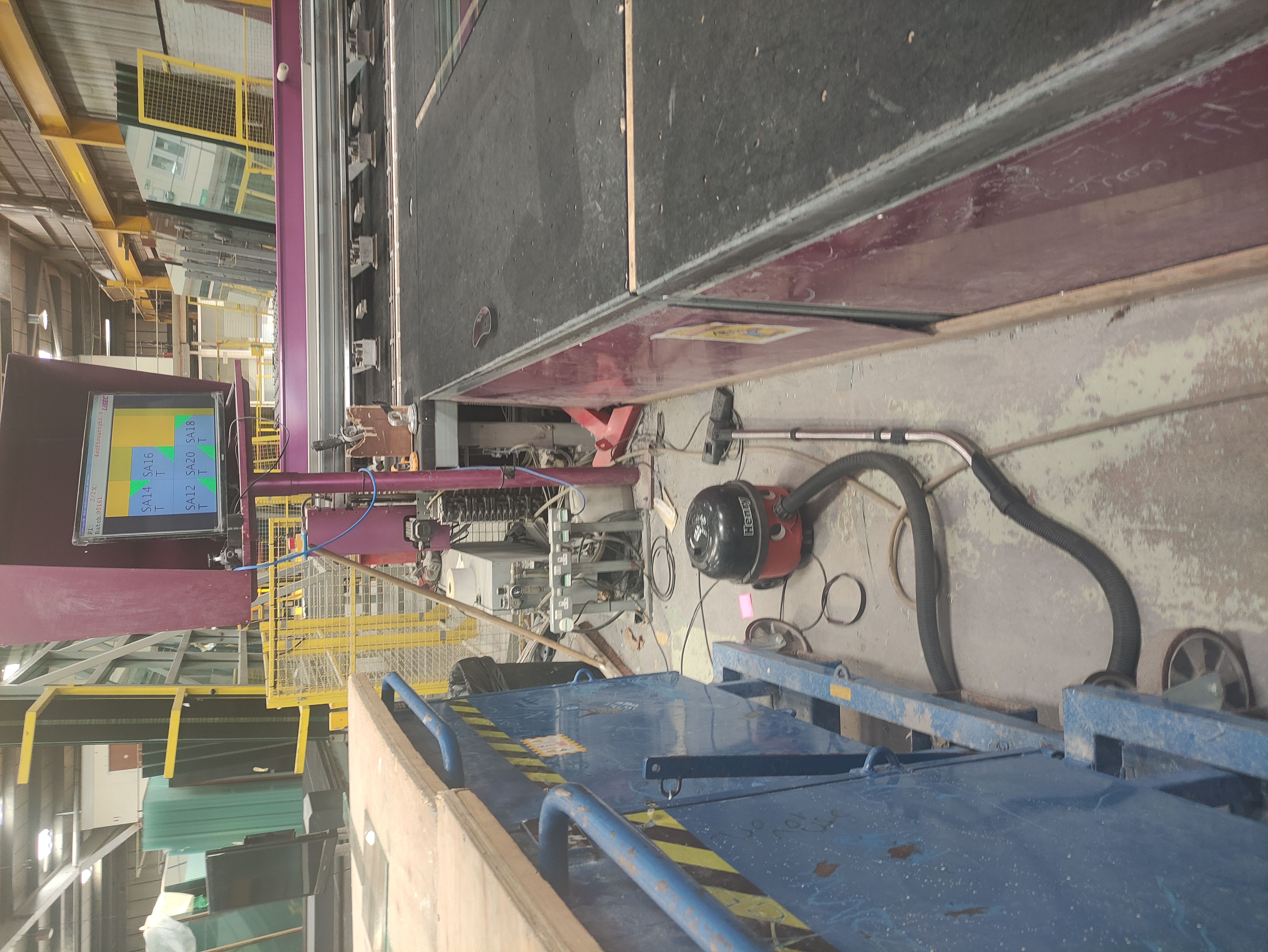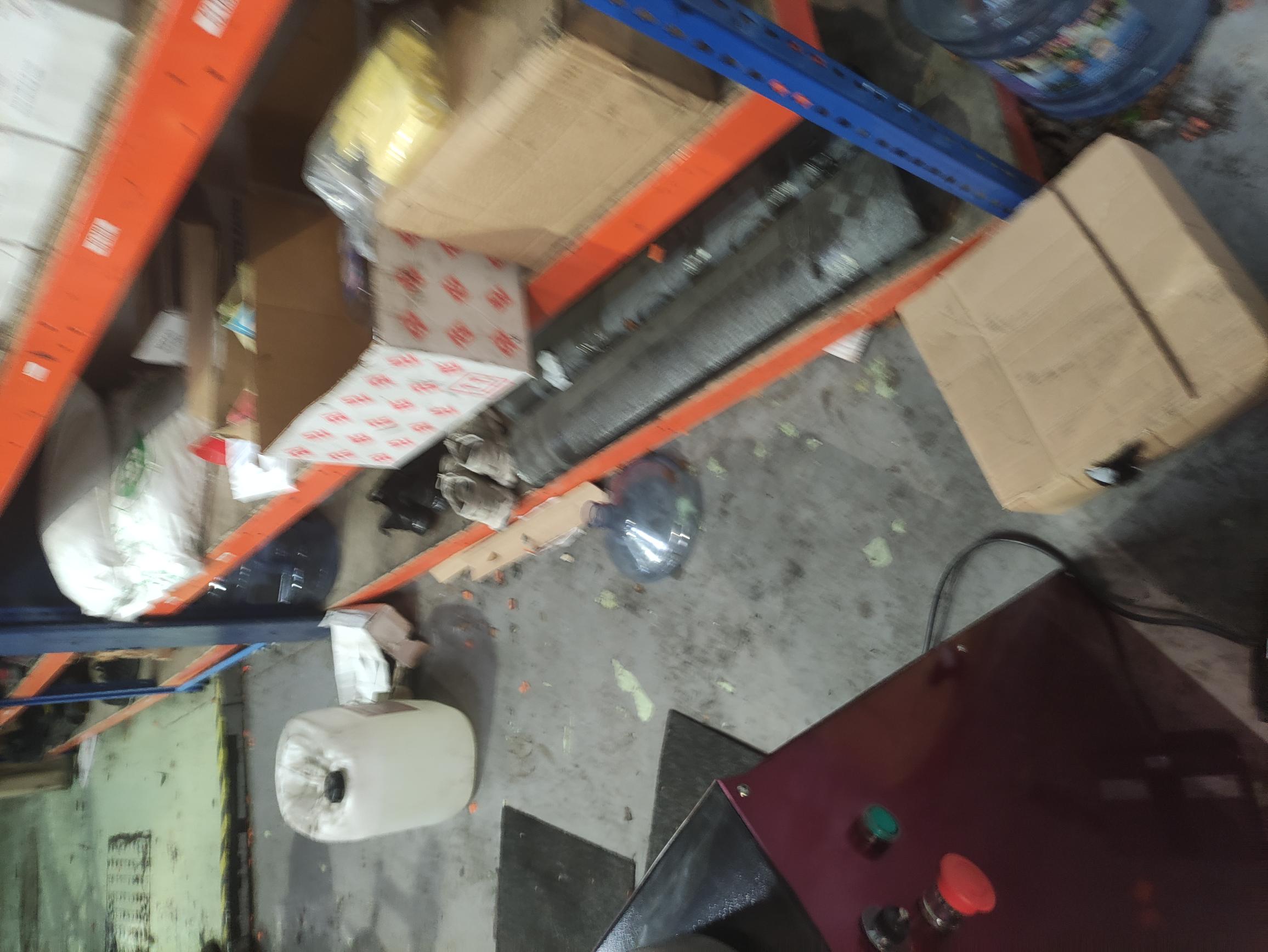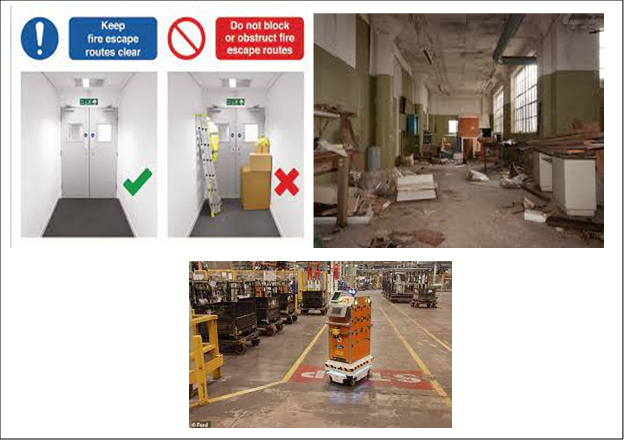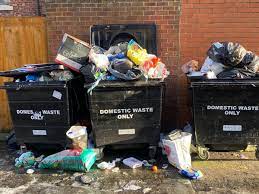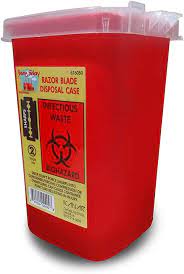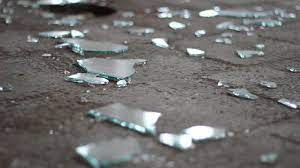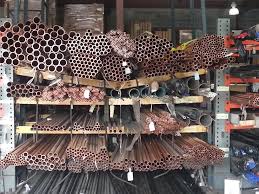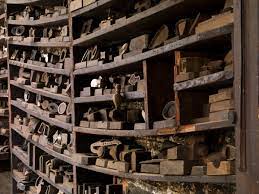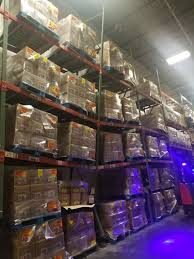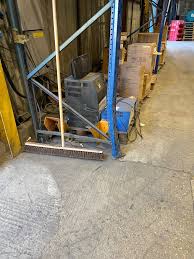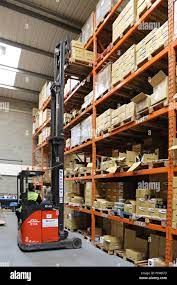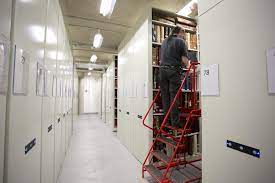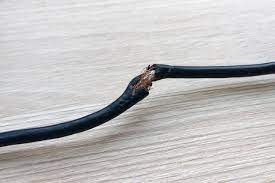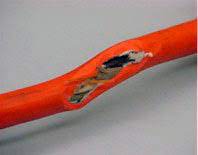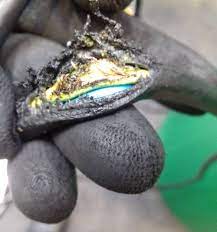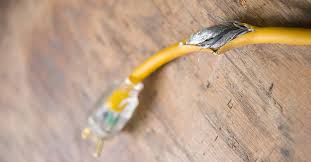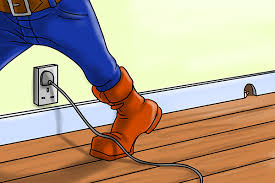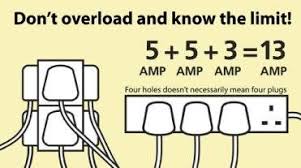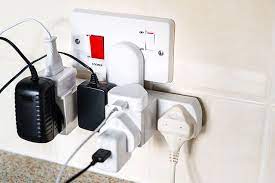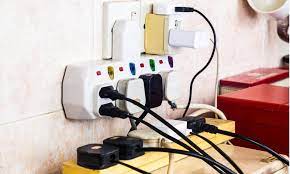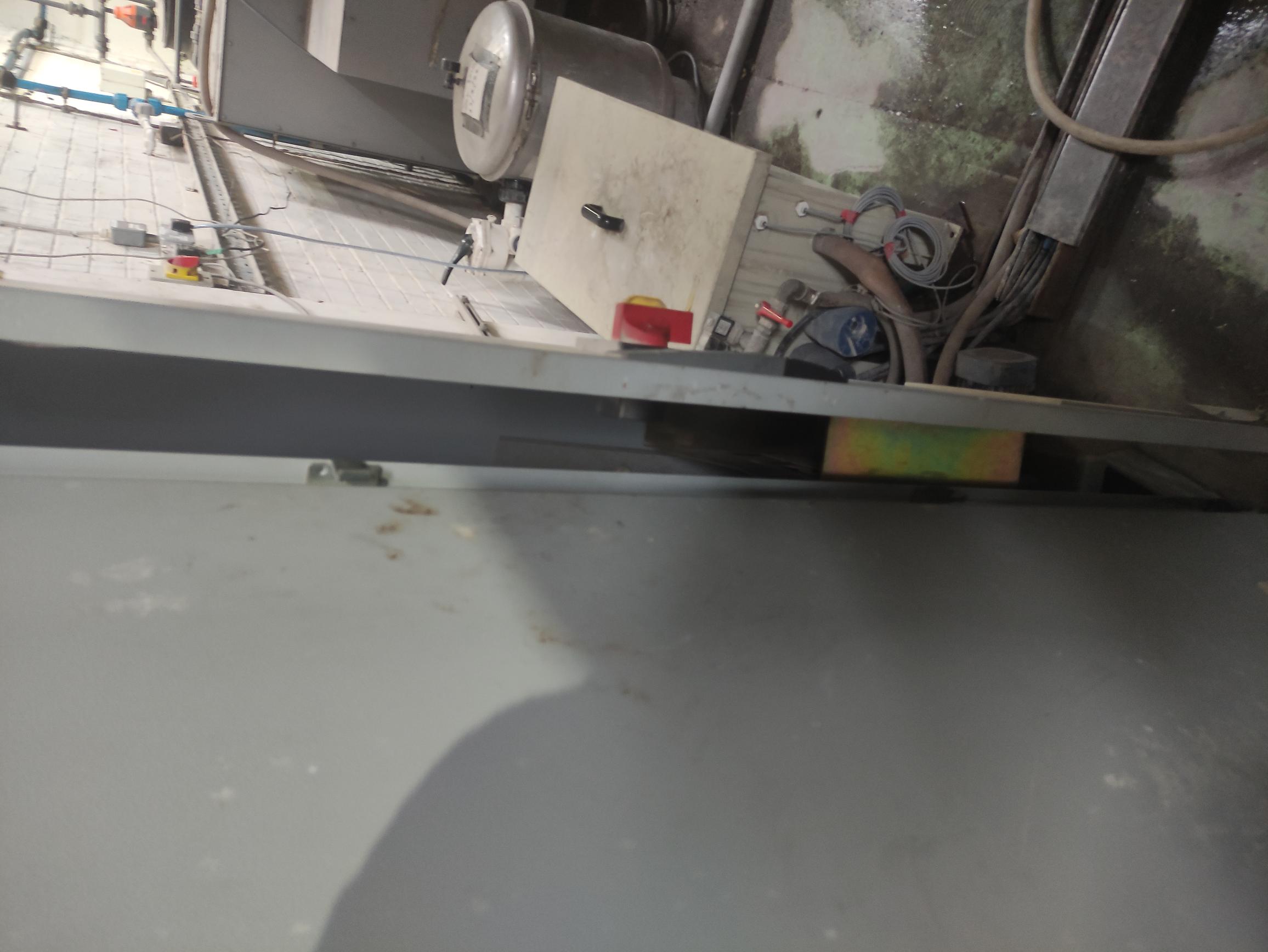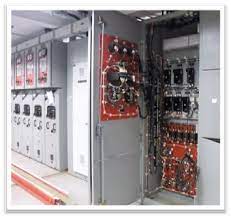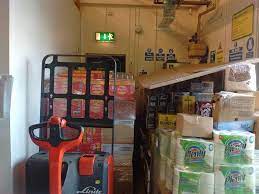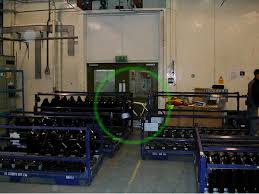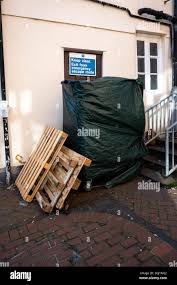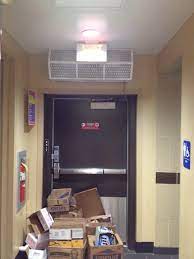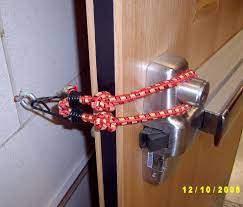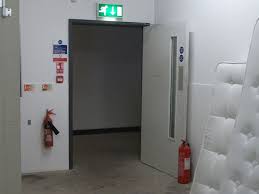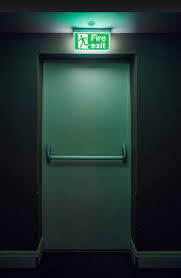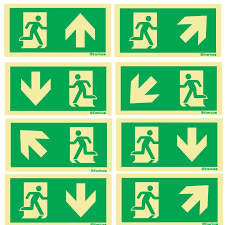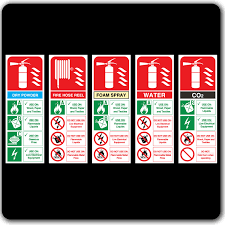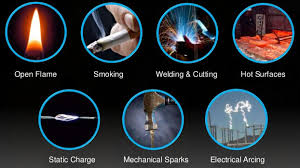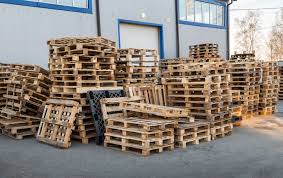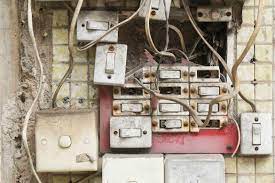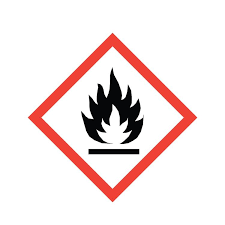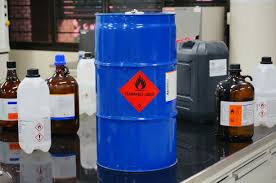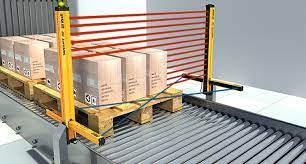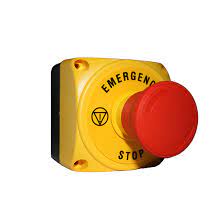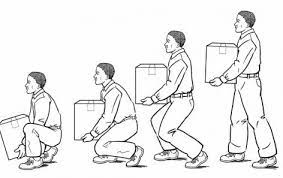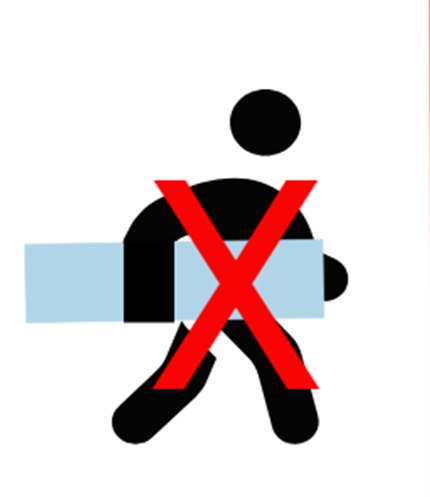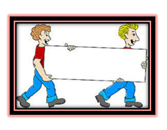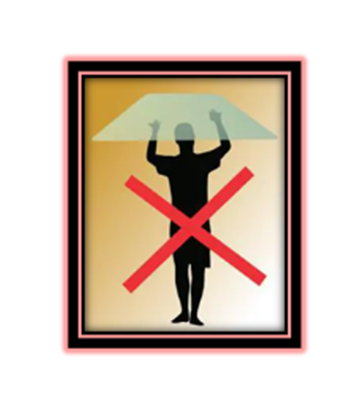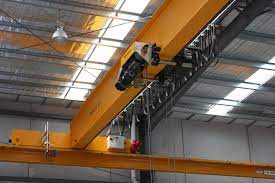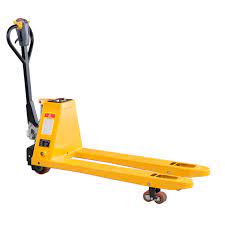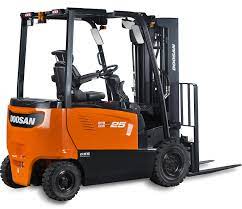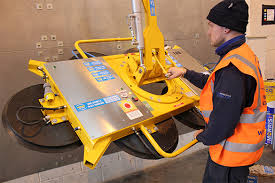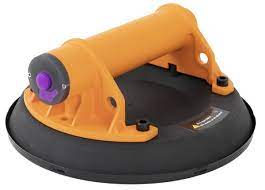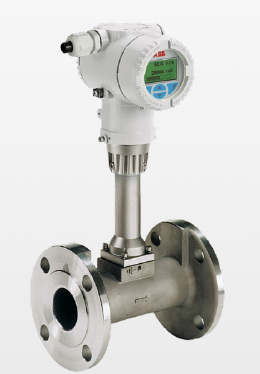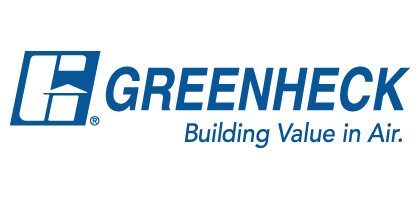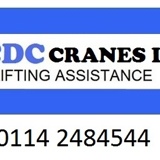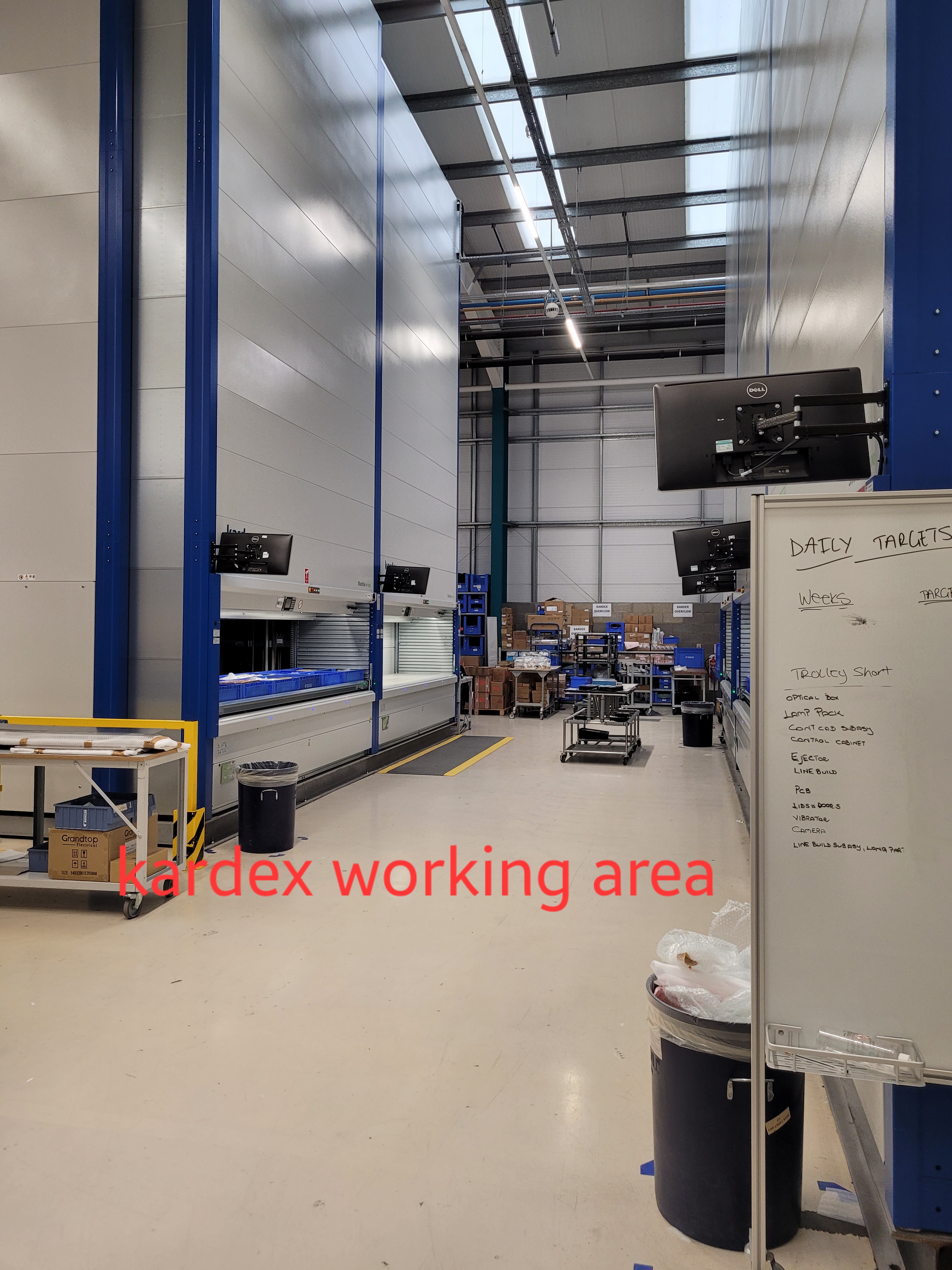Title Page
-
Conducted on
-
Area Inspected
- Line 1 & Line 2 (Including Butyler/Desiccant)
- Cutting Area
- Glass Intake and Glass Stores
- Leading Area & Office
- Engineering
- Mezzanine
- External
- Welfare Facilities & Surrounding Areas
- Despatch
-
Photo at Time of Inspection
-
Inspected By
Working Environment
Working Environment
-
Is it too hot?
-
There's no law for maximum working temperature, or when it's too hot to work, because every workplace is different. No meaningful upper limit can be imposed because in many indoor workplaces high temperatures are not seasonal but created by work activity, for example in bakeries or foundries
-
Yes or No
-
Were you able to rectify this immediately?
-
Please explain the action/s taken.
-
Please explain the action/s taken
-
Is it too cold?
-
Yes or No
-
Were you able to rectify this immediately?
-
Please explain the action/s taken.
-
Please explain the action/s taken
-
Is there any damage to the floor? (Holes, cracks, raised areas, worn floor markings etc)
-
-
-
-
Yes or No
-
Were you able to rectify this immediately?
-
Please explain the action/s taken.
-
Please explain the action/s taken
-
Is there adequate ventilation?
-
Ventilation refers to the movement of outdoor air into a building, and the circulation of that air within the building or room while removing stale air to improve the air quality. This can be achieved through natural means or by mechanical means or both.
-
Yes or No
-
Were you able to rectify this immediately?
-
Please explain the action/s taken.
-
Please explain the action/s taken
-
Is the floor free from water?
-
Yes or No
-
Were you able to rectify this immediately?
-
Please explain the action/s taken.
-
Please explain the action/s taken
-
Is the lighting level adequate?
-
REFERENCE: A well lighted workplace.
[This is an example of how you can use iAuditor to include best practice reference images in your templates to assist with inspections] -
Yes or No
-
Were you able to rectify this immediately?
-
Please explain the action/s taken.
-
Please explain the action/s taken
-
Is the area dusty?
-
Dust can be a problem in almost any industry. The hazards of dusts like
silica and wood are well recognised, and HSE produces specific guidance for these
dusts, but there are many more substances that generate dusts which are
hazardous to health. Exposure to all such dusts needs to -
Yes or No
-
Were you able to rectify this immediately?
-
Please explain the action/s taken.
-
Please explain the action/s taken
-
If the area noisy. Is everyone wearing hearing protection?
-
Noise means unwanted sound or loud discordant or disagreeable sound or sounds. The effect of noise on hearing can be temporary or permanent. Temporary deafness is often experienced after leaving a noisy place.
-
Yes or No
-
Were you able to rectify this immediately?
-
Please explain the action/s taken.
-
Please explain the action/s taken
-
Is there any damage to the building? (Holes, dents, damaged sections etc)
-
-
-
-
-
Yes or No
-
Were you able to rectify this immediately?
-
Please explain the action/s taken.
-
Please explain the action/s taken
Housekeeping & 5S (Sort, Set in order, Shine, Standardize, Sustain)
Housekeeping
-
Are there any items in the area they should not be there?
-
-
-
Workplace housekeeping may be defined as activities undertaken to create or maintain an orderly, clean, tidy and safe working environment. Effective housekeeping can eliminate many workplace hazards and help get work done safely and properly.
-
Yes or No
-
Were you able to rectify this immediately?
-
Please explain the action/s taken.
-
Please explain the action/s taken
-
Of the items that should be in the area, are they stored in the correct location?
-
If you have answered no, have you tagged the item?
-
Were you able to rectify this immediately?
-
Please explain the action/s taken.
-
Please explain the action/s taken
-
Are access ways obstructed?
-
Blocked walkways can pose trip and fall hazards or cause collisions with heavy equipment or hazardous materials
-
Yes or No
-
Were you able to rectify this immediately?
-
Please explain the action/s taken.
-
Please explain the action/s taken
-
Are rubbish bins emptied regularly?
-
Overflowing waste bins are an ideal breeding ground for bacteria, insects and vermin. The flies that visit the garbage are also the same flies that roam around your lunch buffet and drop their offspring on your plate.
-
Yes or No
-
Were you able to rectify this immediately?
-
Please explain the action/s taken.
-
Please explain the action/s taken
-
Sharps removal procedure in place?
-
Sharps waste includes medical devices with sharp points or edges that can cut or puncture the skin, such as needles, syringes, and lancets, that are necessary for patient care outside of traditional healthcare settings.
-
Yes or No
-
Were you able to rectify this immediately?
-
Please explain the action/s taken.
-
Please explain the action/s taken
-
Is there glass on the floor?
-
Broken glass can cause a variety of injuries. If there are shards of broken glass on the floor, this could be a trip hazard. Even if you do not fall on the glass, you could injure yourself on the way to the ground, or upon impact with the ground. Fractures, dislocations and other injuries are all possible
-
Yes or No
-
Were you able to rectify this immediately?
-
Please explain the action/s taken.
-
Please explain the action/s taken
Material storage
Material/Item Storage
-
Racking/shelving overloaded/stacked incorrectly? (Items look like they might fall off, shelves bowing under weight, items propped up by other items etc)
-
Yes or No
-
Were you able to rectify this immediately?
-
Please explain the action/s taken.
-
Please explain the action/s taken
-
Racking/shelving in good condition?
-
-
-
Racking is a heavy duty storage system. Usually stacked higher and deeper with items and pallets, than a shelving system would be. In order to access the loads on racking often it requires machinery such as a forklift.
-
Yes or No
-
Were you able to rectify this immediately?
-
Please explain the action/s taken.
-
Please explain the action/s taken
-
Suitable access to high level storage? (Where required, steps available?)
-
-
Yes or No
-
Were you able to rectify this immediately?
-
Please explain the action/s taken.
-
Please explain the action/s taken
-
Are all lids on skips? (If no, report to area supervisor immediately)
-
Were you able to rectify this immediately?
-
Please explain the action/s taken.
-
Please explain the action/s taken
Electrical
Electrical
-
Are all electrical leads undamaged? (frayed/loose/exposed wires)
-
-
-
-
Electrical Hazard – A dangerous condition such that contact or equipment failure can result in. electric shock, arc-flash burn, thermal burn, or blast.
-
Yes or No
-
Were you able to rectify this immediately?
-
Please explain the action/s taken.
-
Please explain the action/s taken
-
Are there any trailing leads?
-
Trailing leads could present a trip hazard, meaning they could cause someone to trip and fall, causing injury. Trailing cables such as these could cause injuries such as: Broken bones – The bone that's broken and its severity could depend on the force of the impact and how you land.
-
Yes or No
-
Were you able to rectify this immediately?
-
Please explain the action/s taken.
-
Please explain the action/s taken
-
Sockets overloaded?
-
-
-
Don't overload sockets – plugging too many electrical appliances into one socket can lead to overheating. Be vigilant, checked regularly for signs of dangerous or loose wiring such as hot plugs and sockets.
-
Yes or No
-
Were you able to rectify this immediately?
-
Please explain the action/s taken.
-
Please explain the action/s taken
-
Are all electrical panels locked and secure?
-
-
These openings allow for the potential for electrocution, physical damage, and dust and dirt to accumulate in the circuits.
-
Yes or No
-
Were you able to rectify this immediately?
-
Please explain the action/s taken.
-
Please explain the action/s taken
First Aid
-
First aid is the first and immediate assistance given to any person with either a minor or serious illness or injury,[1] with care provided to preserve life, prevent the condition from worsening, or to promote recovery until medical services arrive.
-
Are first aid boxes in place?
-
Were you able to rectify this immediately?
-
Please explain the action/s taken.
-
Please explain the action/s taken
-
Are first aiders named on first aid posters?
-
Were you able to rectify this immediately?
-
Please explain the action/s taken.
-
Please explain the action/s taken
-
Are first aiders wearing green bump caps to identify them?
-
Were you able to rectify this immediately?
-
Please explain the action/s taken.
-
Please explain the action/s taken
Fire Precautions
Fire Precaution
-
Routes clear of obstructions?
-
-
-
-
It is illegal to obstruct any emergency route, especially stairways and final exits. You must also remember that 'normal' working corridors are often part of escape routes and even partial obstruction by any objects that prevent the use of the full width of the route is also illegal.
-
Yes or No
-
Were you able to rectify this immediately?
-
Please explain the action/s taken.
-
Please explain the action/s taken
-
Fire doors easily opened?
-
Were you able to rectify this immediately?
-
Please explain the action/s taken.
-
Please explain the action/s taken
-
Fire doors propped open?
-
-
Fire doors are an integral part of a building's passive fireproofing plan. They're used for fire compartmentation – a process that places physical barriers in strategic areas around a building, in order to slow the spread of flames and smoke in the event of a fire.
-
Yes or No
-
Were you able to rectify this immediately?
-
Please explain the action/s taken.
-
Please explain the action/s taken
-
Emergency lighting adequate? (Emergency exit lights located above fire exits)
-
The purpose of emergency lighting is to provide a level of illumination in the egress path that allows the occupants of the building to safely exit in the event of a mains power failure
-
Yes or No
-
Were you able to rectify this immediately?
-
Please explain the action/s taken.
-
Please explain the action/s taken
-
Evacuation routes clearly signed?
-
An evacuation route is a way to get out of a building if there is an emergency, such as a fire. A clear evacuation route is very important if there is a fire. In an emergency, the main evacuation route is through the front door.
-
Yes or No
-
Were you able to rectify this immediately?
-
Please explain the action/s taken.
-
Please explain the action/s taken
-
Extinguishers in place?
-
Were you able to rectify this immediately?
-
Please explain the action/s taken.
-
Please explain the action/s taken
-
Portable or movable apparatus used to put out a small fire by directing onto it a substance that cools the burning material, deprives the flame of oxygen, or interferes with the chemical reactions occurring in the flame.
-
Extinguishers in date?
-
Were you able to rectify this immediately?
-
Please explain the action/s taken.
-
Please explain the action/s taken
-
Identification label in place?
-
The letter on a fire extinguisher indicates its classification: Class A puts out ordinary combustible fires (wood, paper, plastic, etc.). Class B puts out flammable liquid fires (oil, gas, petroleum, etc.). Class C puts out electrical fires.
-
Yes or No
-
Were you able to rectify this immediately?
-
Please explain the action/s taken.
-
Please explain the action/s taken
-
Are there any flammable materials stored close to potential ignition hazards?
-
-
-
-
-
A flammable material is something that can burn in air under certain conditions. A material is flammable if it ignites easily at ambient temperatures. In other words, a combustible material ignites with some effort and a flammable material catches fire immediately on exposure to flame
-
Yes or No
-
Were you able to rectify this immediately?
-
Please explain the action/s taken.
-
Please explain the action/s taken
COSHH (Control of Substances Hazardous to Health)
COSHH
-
These substances could be dusts, gases or fumes that you breathe in, or liquids, gels or powders that come into contact with your eyes or skin. There could also be harmful micro-organisms present that can cause infection, an allergic reaction or are toxic
-
Is exposure to any hazardous substances adequately controlled? (Closed containers, temporary containers/bottles etc labelled, stored in correct locations)
-
Were you able to rectify this immediately?
-
Please explain the action/s taken.
-
Please explain the action/s taken
-
Are all unnecessary spray cans removed from the area?
-
Were you able to rectify this immediately?
-
Please explain the action/s taken.
-
Please explain the action/s taken
-
Are there any open cups or items of food in the area?
Machinery
Machinery
-
Machine guarding is a safety feature on or around manufacturing or other engineering equipment consisting of a shield or device covering hazardous areas of a machine to prevent contact with body parts or to control hazards like chips or sparks from exiting the machine
-
All guards in place and secure? (No loose or missing screws/nuts bolts etc)
-
Were you able to rectify this immediately?
-
Please explain the action/s taken.
-
Please explain the action/s taken
-
Are all panels in place and secure?
-
Were you able to rectify this immediately?
-
Please explain the action/s taken.
-
Please explain the action/s taken
-
Are all moving parts inaccessible? (Would you be able to, if you tried, touch moving parts while in operation?)
-
Were you able to rectify this immediately?
-
Please explain the action/s taken.
-
Please explain the action/s taken
-
All light curtains in place and undamaged?
-
A set of light curtains contains a transmitter head and a receiver head. A transmitter generates an infra-red light between the two heads which acts as a detection zone. A movement detected within the detection zone initials the machine stopping procedure and automatically disconnect all hazardous machinery.
-
Yes or No
-
Were you able to rectify this immediately?
-
Please explain the action/s taken.
-
Please explain the action/s taken
-
Emergency stop buttons in place and undamaged?
-
An emergency stop switch is a safety mechanism used to shut off machinery in an emergency, when it cannot be shut down in the usual manner.
-
Yes or No
-
Were you able to rectify this immediately?
-
Please explain the action/s taken.
-
Please explain the action/s taken
PPE (personal protective equipment)
PPE
-
Employers are responsible for providing, replacing and paying for personal protective equipment. PPE should be used when all other measures are inadequate to control exposure. It protects only the wearer, while being worn.
-
All PPE being worn as per area?
-
Were you able to rectify this immediately?
-
Please explain the action/s taken.
-
Please explain the action/s taken
-
Is it in good condition?
-
Were you able to rectify this immediately?
-
Please explain the action/s taken.
-
Please explain the action/s taken
-
Is all PPE the correct type?
-
Were you able to rectify this immediately?
-
Please explain the action/s taken.
-
Please explain the action/s taken
Eyewash Bottles/Cylinders
Eyewash Bottles/Cylinders
-
Emergency eyewash stations provide on-the-spot drenching facilities which allow workers to flush away hazardous substances that could cause injury if not quickly removed.
-
Are they full?
-
Were you able to rectify this immediately?
-
Please explain the action/s taken.
-
Please explain the action/s taken
-
Are they in date?
-
Were you able to rectify this immediately?
-
Please explain the action/s taken.
-
Please explain the action/s taken
-
Correctly stored/fixed?
-
Were you able to rectify this immediately?
-
Please explain the action/s taken.
-
Please explain the action/s taken
Manual Handling
-
Are there good manual handling practices taking place?
-
-
-
-
-
Manual handling is work where you have to lift, lower, push, pull, carry, move, hold or restrain something. It's hazardous manual handling if it involves: repeated, sustained or high force. sustained awkward posture. repetitive movements.
Things to consider. Lifting/carrying, pulling/pushing, heavy weights, repetitive movements, persons carrying heavy or unstable loads. -
Yes or No
-
Were you able to rectify this immediately?
-
Please explain the action/s taken.
-
Please explain the action/s taken
-
If manual handling aids are in place, are they being used where required?
-
-
-
-
-
Yes or No
-
Were you able to rectify this immediately?
-
Please explain the action/s taken.
-
Please explain the action/s taken
Outside areas
Outside Areas
-
Roadways and pavements in good condition?
-
Were you able to rectify this immediately?
-
Please explain the action/s taken.
-
Please explain the action/s taken
-
Access ramps in place where required?
-
Were you able to rectify this immediately?
-
Please explain the action/s taken.
-
Please explain the action/s taken
-
Steps clear of obstructions and clean? (No items on or around the stairs)
-
Were you able to rectify this immediately?
-
Please explain the action/s taken.
-
Please explain the action/s taken
-
Hand rails in good condition?
-
Were you able to rectify this immediately?
-
Please explain the action/s taken.
-
Please explain the action/s taken
-
All lights working?
-
Were you able to rectify this immediately?
-
Please explain the action/s taken.
-
Please explain the action/s taken
-
Are lorries and vehicles keeping to the site speed limit?
-
Were you able to rectify this immediately?
-
Please explain the action/s taken.
-
Please explain the action/s taken
-
Are all staff, including drivers, wearing high visibility clothing when out of their lorries?
-
Were you able to rectify this immediately?
-
Please explain the action/s taken.
-
Please explain the action/s taken
-
Have the keys been removed from the forklift, if it is currently not in use?
-
Were you able to rectify this immediately?
-
Please explain the action/s taken.
-
Please explain the action/s taken
Other Items to Raise
-
Are there any other items to raise?
-
What is the issue to raise?
-
Were you able to rectify this immediately?
-
Please explain the action/s taken.
-
Please explain the action/s taken
-
Are there any other items to raise?
-
What is the issue to raise?
-
Were you able to rectify this immediately?
-
Please explain the action/s taken.
-
Please explain the action/s taken
-
Are there any other items to raise?
-
What is the issue to raise?
-
Were you able to rectify this immediately?
-
Please explain the action/s taken.
-
Please explain the action/s taken
-
Are there any other items to raise?
-
What is the issue to raise?
-
Were you able to rectify this immediately?
-
Please explain the action/s taken.
-
Please explain the action/s taken
-
Are there any other items to raise?
-
What is the issue to raise?
-
Were you able to rectify this immediately?
-
Please explain the action/s taken.
-
Please explain the action/s taken
-
Are there any other items to raise?
-
What is the issue to raise?
-
Were you able to rectify this immediately?
-
Please explain the action/s taken.
-
Please explain the action/s taken
-
Are there any other items to raise?
-
What is the issue to raise?
-
Were you able to rectify this immediately?
-
Please explain the action/s taken.
-
Please explain the action/s taken
-
Are there any other items to raise?
-
What is the issue to raise?
-
Were you able to rectify this immediately?
-
Please explain the action/s taken.
-
Please explain the action/s taken
Completion
Completion
-
Recommendations
-
Full Name and Signature of the Inspector






